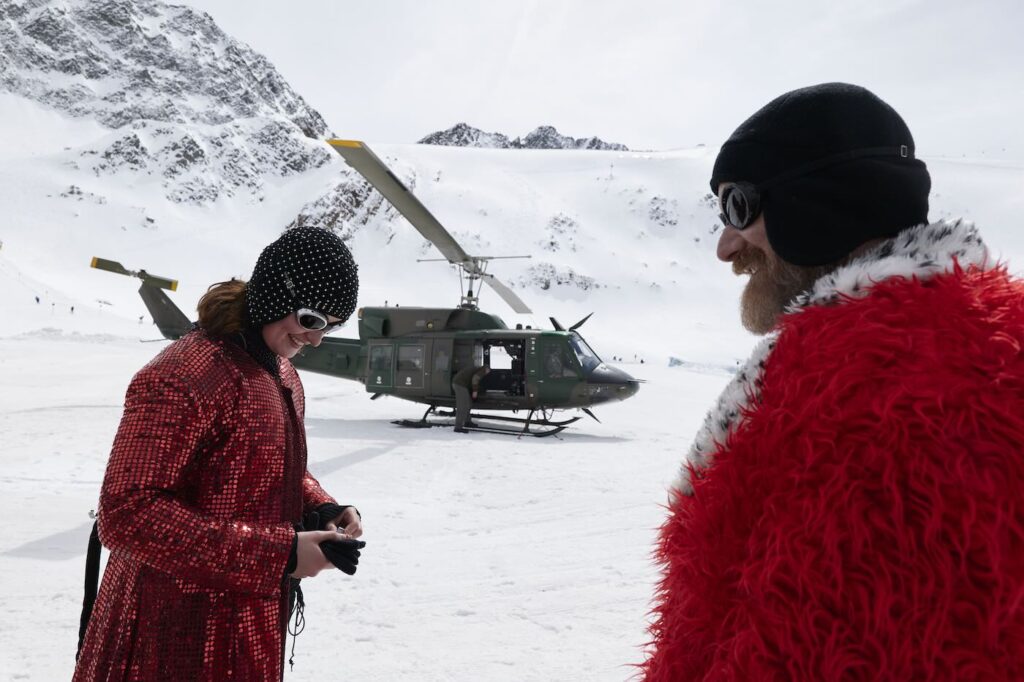It’s spring in the Alps. Temperatures are rising, the sun is shining down mercilessly after the snowstorm. Three hundred people on skis, in airplanes, in snow groomers, on motocross bikes, and dancers on foot, are all waiting to cross the Alps like Hannibal once did. There is a sense of danger in the air. A state of emergency?

Hannibal’s dream
The Lawine Torren company is an alpine plant, so addicted to the mountains that it cannot be confined to a theater. Hubert Lepka’s choreographies roar and make a racket, reflecting the group’s enthusiasm for engines and motors. Every two years, they forge a new Alpine crossing, pushing man and machine to the limit
